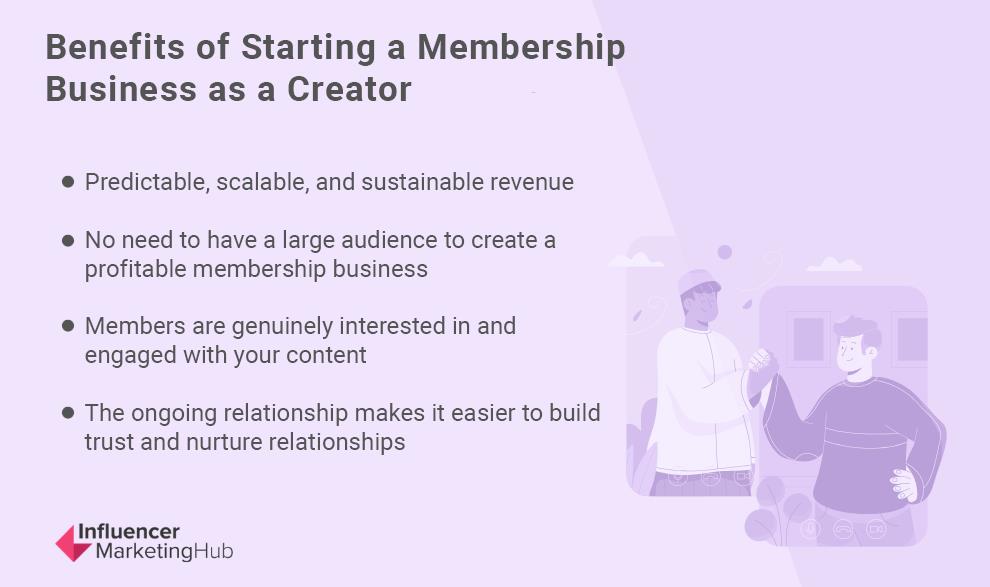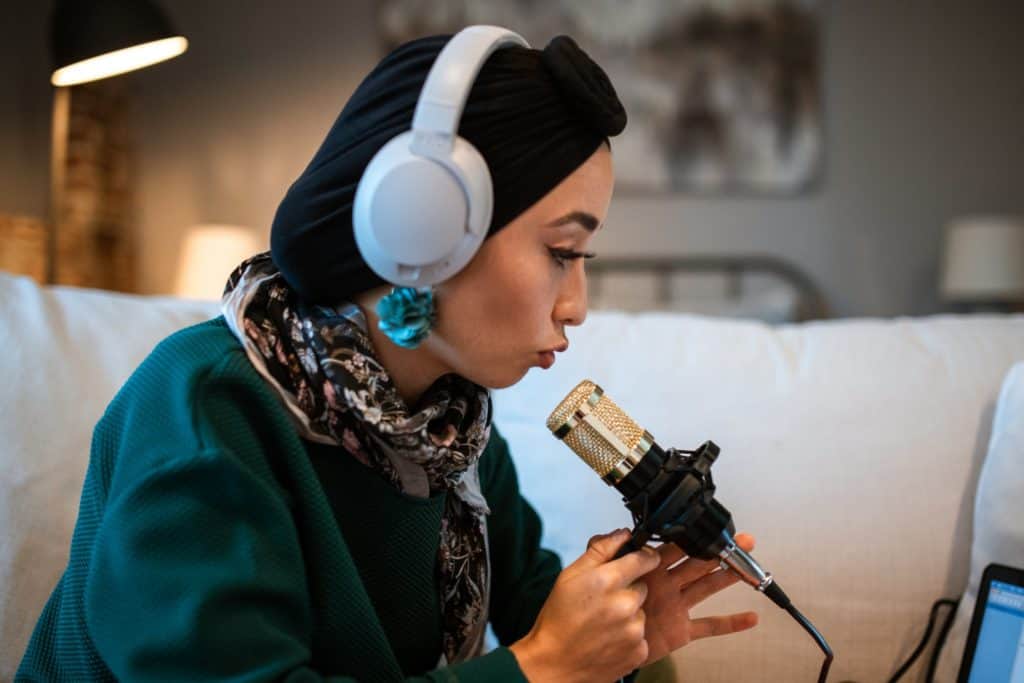Podcasts are traditionally free for everyone to listen. You simply grab an episode using your favorite podcast listening app. But that isn’t the only way to run a show. You can also be quite successful with a membership podcast.
A membership podcast is a type of private podcast. Members must subscribe to listen. Episodes are not available to the public.
In most cases, membership podcasts cost a fee to join. The fee is usually recurring, but some memberships only require a one-time charge. Prices vary depending on the type and popularity of the podcast.
Some podcasts produce a traditional free show in addition to a premium component. The premium component might be extra content alongside each episode, totally new episodes, or access to supplementary resources.
In this article, we’re going to lay out the advantages and disadvantages of membership podcasts, and then give you some tips to run a successful show of your own.
Advantages of Membership Podcast
- Reliable income. You know exactly how much you’ll make each month.
- You don’t have to monetize your podcast with ads (though many still do).
- You develop a captive audience that’s willing to pay for your content. This makes it easier to sell them other products and services in the future.
- You can communicate with all of your listeners directly because you get their email addresses when they subscribe.
- It’s easier to determine how much to spend on each episode when you know for sure how much you’ll get from your audience.

Disadvantages of a Membership Podcast
- There are a lot of free podcasts out there, so convincing people to pay for your content can be challenging, especially if you’re in a saturated niche.
- Paying customers expect you to deliver content as requested. If you promise an episode every week, you must deliver every week.
- You’ll have to deal with your community every day. This is a challenge if you aren’t a naturally social person who likes to help people.
Membership podcasts certainly aren’t for every show. We don’t recommend that every podcast start or convert their show into a membership podcast. But they can be a lucrative option for podcasters who are focused on generating revenue through their show.
Action
Read to start your own podcast? Learn the nitty-gritty details of starting your own show in our comprehensive guide. Learn how to start a podcast.
10 Tips for Starting and Running a Membership Podcast
Developing a membership podcast is similar to starting any other kind of show, but there are a few differences. The following are some tips to help you be successful with a membership podcast.
If you’re new to podcasting, we strongly recommend reading our full guide on starting a podcast. It includes tons of valuable information for new podcasters.
1. Building an audience takes time
Growing a membership podcast won’t happen overnight, even if you already have a big audience of fans and listeners. Only a small percentage will be willing to pay. Most are happy to accept your content for free.
So before you start a membership podcast, make sure you’re in it for the long haul. Limit your expenses so you can continue making content for at least a year without serious income.
2. It helps to start with an existing audience
It’s much easier to encourage an existing audience to become paying listeners than to develop a base of paying listeners from scratch. The existing audience will know your value and style. They are much more likely to take a chance on you.
But an existing audience doesn’t have to be a podcast listenership. You may already have blog readers, social media followers, or an email list. Those are perfectly suitable audiences to turn into membership podcast listeners.
3. You’ll need a couple extra tools
Functionally, a membership podcast is the same as any other kind of podcast. You need a podcast hosting service, some basic gear, marketing assets like transcriptions and show notes, and possibly some help with the editing.
But you’ll also need two other things: First, you need a payment processor to collect membership fees. There are plenty of mainstream options, like Stripe, PayPal, and Square.
Second, you need a way to distribute your podcast privately so only your members can listen to your episodes. The easiest solution is to use a podcast host that offers private podcasting. All you need to do is add your subscribers name and email address. They will receive an email inviting them to your private podcast. This allows them to subscribe using a unique RSS feed URL through their favorite podcasting app.
With Castos you can easily create a private podcast for your membership site, online course, or community. And integrate it with the tools you already use through our direct integrations and Zapier integration. Learn more.
You could also use a membership tool like MemberSpace or Memberful. These apps let you create custom membership spaces where you can upload private content like podcast audio files.
4. Focus on your production value
Listeners are willing to forgive some mistakes for free content, but if they’re paying a fee, they expect a decent production. It’s important to take your audio quality seriously. It helps to use quality equipment and an editing service to ensure your audio is perfect.
5. Go easy with other monetization methods
If people are paying to access your membership podcast, they won’t tolerate constant advertising interruptions or calls for donations. You can sprinkle in some (obviously it’s smart to monetize in multiple ways), but be gentle.
6. Make sure the content is premium
If you’re going to ask people to pay money for your content, it must be valuable. You can’t serve the same kind of content that everyone else gives away for free. Otherwise, your listeners will just go to those free sources.
What type of content should you create for your membership podcast? Here are a few suggestions. You could stick to one type or do them all.
- Bonus content – Extend the value of your free lessons with extra tips and resources. If your free episode covers eight tips, give out three more in your members-only episodes. (Make the extra three your best tips.)
- Ad-free content – If you run ads on your show, some fans might be willing to pay a little each month to enjoy the ad-free versions.
- Repurpose your existing IP – You can turn other forms of content (like books, courses, or videos) into podcast content. It will work for anything you’ve created that you don’t want to give away free.
- Make old episodes available – Consider archiving your back catalogue and making it available only to paying members.
- Special series – Create a short season of episodes that chronicle an event, project, or challenge. For instance, if you teach people how to blog, you could create a 10-episode members-only series that documents how you set up a blog.
- Industry news/commentary – Deliver some super specialized information about what’s happening in your industry or niche.
- Community content – Get your community involved by highlighting their success and failures. You could even bring them on as interviews. This is a great way to give your audience a personal connection to your show.
- Focused content – If your free episodes are longform interviews or monologues, use your membership podcast to summarize the real value. You could boil each free episode into a list of focused tips or techniques.
7. Consider offering multiple membership tiers
Depending on your audience, you may have different segments willing to pay different prices. For instance, some listeners may be willing to spend $25/month for premium content while others are only willing to spend $10/month.
If you think this is the case for your audience, consider offering multiple price tiers with different levels of perks. How many plans and what comes with each is up to you.
8. Be prompt with your membership podcast customer service
Membership podcast subscribers are paying customers, which means you’ll have to perform a certain amount of customer service. Some people will need help subscribing and unsubscribing. Inevitably, some people will want refunds. Decide how you will respond to these issues and leave enough space in your schedule to handle them.
9. Engage with your audience
Podcasting is a one-way method of communication, but your members deserve a little more engagement. You want to give him a voice by creating some place for them to speak their mind. Here are some suggestions:
- Create a private Facebook group. Create daily posts with discussion topics and questions. Respond to your members’ posts.
- Create a private Slack workspace. Pose daily questions and respond to members’ comments.
- Open a fresh email address and whitelist each member. Encourage them to email you questions or ideas.
- Use the message board or comments features in your membership platform.
- Hold regular Zoom meetings. Stimulate discussion and create opportunities for your members to discuss their own topics.
- Host private streaming sessions over Twitch, Discord, or YouTube Live where you respond directly to your members’ questions. (There’s a bit more interaction potential on Discord, but it’s less well known than Twitch or YouTube.)

10. Don’t distribute on the big podcast platforms
In the case of a membership podcast, you wouldn’t submit the show’s RSS URL to the major podcast directories like Apple Podcasts, Google Podcasts, or Spotify. The point is to not release it to the public.
Start Your Membership Podcast
As you can see, a membership podcast is pretty much the same as a traditional podcast. The only difference is how you distribute it. The tips we outlined above will make you make your membership podcast successful.
Have you started a membership podcast? Leave a comment with your experience.





